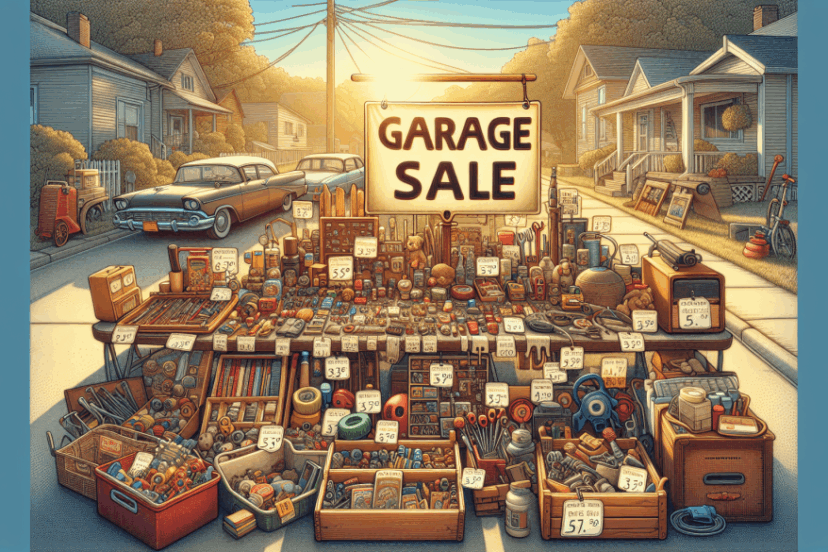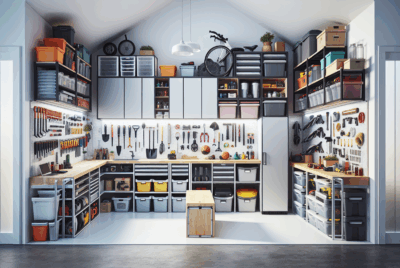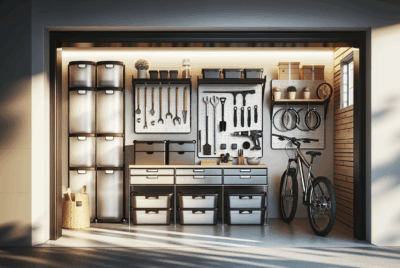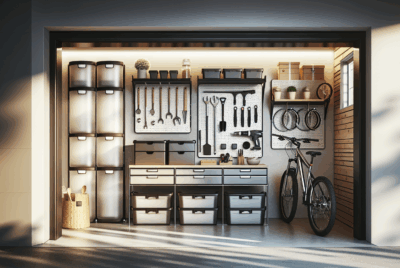How To Price Items For A Garage Sale
As an Amazon Associate, I earn from qualifying purchases, at no additional cost to you. Disclaimer
I’ve always enjoyed hosting garage sales, but one thing that used to stump me was how to price the items. Over the years, however, I’ve learned a few tricks that have helped me successfully sell numerous items at fair and reasonable prices. In this article, I will share some valuable tips on how to price items for a garage sale, so that you can make the most out of your sale and ensure that both you and your customers go home happy with the transactions.

Understanding The Purpose of Your Garage Sale
As you start preparing for your garage sale, it’s important to determine your goal. Are you primarily looking to declutter your space and get rid of unwanted items, or are you hoping to make some extra money? Understanding your purpose will help guide your decisions throughout the process. If your main objective is to declutter, you may be more willing to price items to sell quickly. On the other hand, if you’re hoping to make money, you might take a more strategic approach to pricing.
How to Organize a Successful Garage Sale
While it’s great to have some extra cash from your garage sale, it’s also important to assess the cost-benefit ratio of your time and effort. Consider the amount of time and energy you’re willing to invest in pricing, organizing, and advertising your sale. If the potential profits outweigh the effort, then it’s worth pricing items with the intent to make money. However, if the return on investment isn’t significant, you may decide to focus more on simply decluttering and getting rid of items without worrying too much about maximizing profit.
Researching Pricing Guidelines
Before you start randomly assigning prices to your items, it’s a good idea to do some research on pricing guidelines. Start by checking local regulations and guidelines. Some areas may have specific rules or restrictions on pricing certain items. It’s important to be aware of any legal requirements to ensure a smooth and compliant garage sale experience.
Next, take a look at similar garage sales in your area. Visit a few sales or check online listings to get a sense of the pricing range for different types of items. This will help you understand the market value in your local community and avoid overpricing or underpricing your items.
In addition to local research, you can also search online for average prices of garage sale items. There are various websites and forums where people discuss pricing strategies for different items. While these prices may vary depending on location and demand, they can give you a general sense of what to expect.

Identifying and Categorizing Your Items
To make the pricing process more organized and efficient, it’s helpful to identify and categorize your items. Start by classifying items based on their condition. Separate items that are brand new or in excellent condition from those that show signs of wear and tear. This will allow you to price items accordingly and attract buyers looking for specific condition levels.
Next, group items based on their type. Create sections for books, clothes, electronics, furniture, and any other categories you have. This makes it easier for shoppers to navigate through your items and creates a more organized shopping experience.
As you categorize your items, keep an eye out for any unique or valuable items that may require individual pricing. These could be antique pieces, rare collectibles, or high-end electronics. Research the market value of these items to ensure you’re pricing them competitively.
Determining the Condition of Your Items
Before setting prices, take the time to inspect each item for damages and wear and tear. Be honest with yourself about the condition of your items. This will help you set appropriate prices and avoid any disappointments or conflicts with buyers.
For appliances and electronics, test them to ensure they’re in working order. If an item doesn’t work or has any defects, consider selling it at a significantly lower price or even labeling it as “for parts.” Transparency is key to maintaining a positive reputation as a seller.
When assessing the condition of your items, compare them to their original state. If an item has significant wear and tear or missing parts compared to when it was new, it may warrant a lower price. On the other hand, if an item is in excellent condition or still in its original packaging, you can consider pricing it higher.
Mastering How to Organize a Garage Sale
Setting Preliminary Pricing
Now that you have a better understanding of your items and their condition, it’s time to set preliminary prices. Consider following standard garage sale pricing rules, such as pricing items at 10-30% of their original value, depending on their condition. However, these rules can be adjusted based on your goals and research.
Take into account the item’s condition, its market demand, and the overall value of your collection of items. If you have a lot of items in one category, you may choose to price them more competitively to encourage sales. On the other hand, if you have only a few valuable items or unique pieces, you can price them higher to reflect their worth.
Remember, these are just preliminary prices that can be adjusted as you go along. It’s always better to start with reasonable prices and make adjustments based on customer feedback and market demand.
Considering Offering Bulk Discounts
If you have a large number of similar items or want to encourage bulk purchases, consider offering bulk discounts. This can help attract buyers and clear out your inventory more quickly. Determine if discounts will help sell more items based on the types of items you have and the potential demand.
When setting rules for bulk purchase discounts, be clear and communicate them effectively to customers. For example, you can offer a certain percentage off if someone buys three or more items from a specific category. Make sure your discounts still allow you to meet your goals, whether that is decluttering or making money.
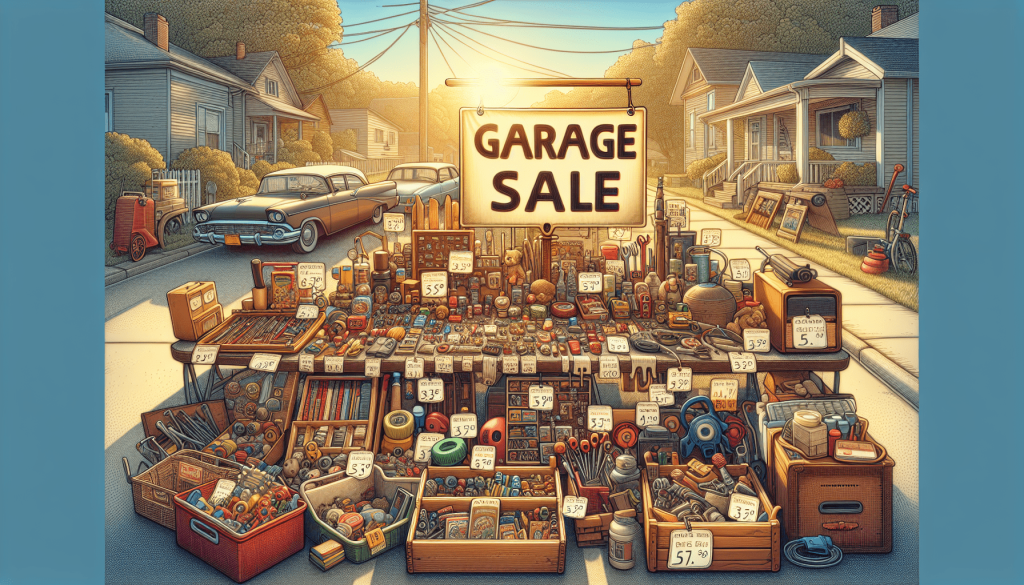
Pricing Unique or Valuable Items
For unique or valuable items, it’s crucial to research their market prices. Look online or consult with experts to understand the current market value of these items. Factors like rarity, demand, and condition can greatly impact their worth.
In some cases, it may be beneficial to get appraisals for very valuable items. Appraisers specialize in determining the value of specific items and can provide you with an expert opinion. Take their appraisal into consideration when pricing these items, but also consider other factors such as their uniqueness and condition.
Adjust your price based on the item’s uniqueness, condition, and market value. It’s important to find a balance between pricing the item competitively to attract buyers and ensuring you’re not undervaluing it.
Reviewing and Adjusting Your Prices
During the garage sale, pay attention to customer feedback. Listen to their comments, suggestions, and questions about your prices. If you’re consistently hearing that an item is priced too high or too low, consider adjusting the price accordingly. Being open to negotiation on prices can also help facilitate sales and create a positive shopping experience.
As the sale progresses, you may find that certain items are in higher demand than others. Adjust prices throughout the sale to reflect the level of demand. If an item is not selling at all, you may need to revisit its pricing or its presentation to attract potential buyers.

Labelling Your Items
Once you have determined the prices for your items, it’s important to label them clearly and consistently. Use easily readable labels that won’t fade or peel off easily. Consider using pre-printed price stickers or make your own by using sticky notes or masking tape.
Label every item with its price so that customers can easily identify how much it costs. Additionally, consider grouping similarly-priced items together for ease of shopping. This allows customers to quickly browse through items within their budget and makes the shopping experience more efficient.
Re-evaluating Unsold Items
At the end of the garage sale, you may find that some items have not sold. Take the time to re-evaluate these unsold items and consider the reasons why they didn’t sell. Price could be a contributing factor, but there may be other reasons like lack of interest or poor presentation.
If the pricing appears to be the main issue, you can adjust the prices for these items or even offer additional discounts. However, if you’ve already made reasonable price adjustments and the items still aren’t selling, it may be time to cut your losses and consider donating or discarding them.
Remember, the ultimate goal of your garage sale is to declutter and/or make some extra money. By understanding the purpose of your sale, researching pricing guidelines, categorizing and pricing your items appropriately, and being open to adjustments, you can ensure a successful and fulfilling garage sale experience. Happy selling!

